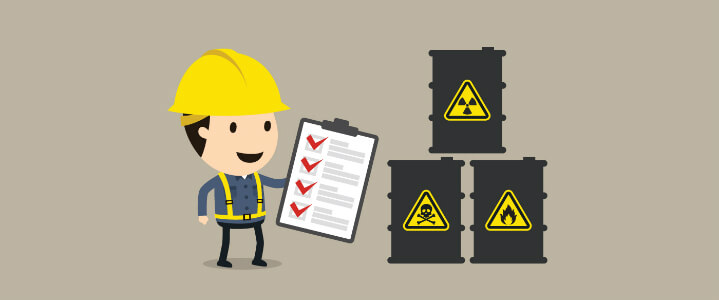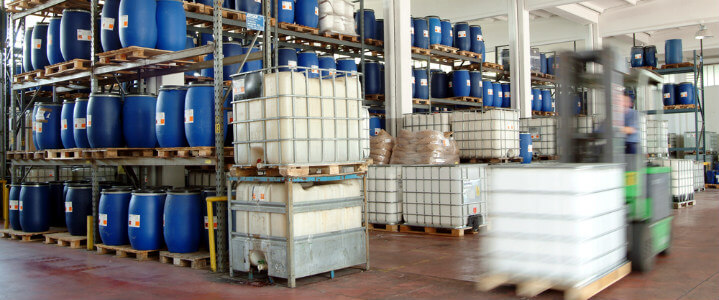For employers and safety managers, maintaining compliance is critical. While some OSHA standards are straightforward, others can be ambiguous. A common question arises: how often do SDS sheets need to be updated or replaced?
This guide clears up misconceptions about OSHA’s requirements for Safety Data Sheets (SDS) and provides clear, actionable advice for keeping your records compliant.
What Are OSHA SDS Sheets?
Formerly known as Material Safety Data Sheets (MSDS), Safety Data Sheets (SDS) are documents that detail critical information about chemical products. These include:
- Health effects and hazard classifications
- Safe usage and storage guidelines
- Emergency procedures
- Risk mitigation strategies
SDS sheets are mandatory for chemical manufacturers, distributors, and importers to ensure consistent communication about hazards. As an employer, you are responsible for maintaining accurate, up-to-date SDS sheets and ensuring they are accessible to employees.
To streamline compliance, consider using professional safety management services like those offered by Safety By Design.
As an employer, it’s your job to make sure the contents of the binder are up to date. Use Safety by Design’s safety management services for assistance in this area. It’s a tedious project, but it’s certainly necessary for compliance.

Do Safety Data Sheets Expire?
SDS sheets do not have a predetermined expiration date but must be updated whenever new and significant information about the chemical becomes available. Examples of such information include:
- Updated hazard classifications
- New risk management procedures
- Revised exposure limits
- Manufacturers and importers must update SDS sheets within three months of becoming aware of new information.
- Labels must be revised within six months to reflect this updated data.
Key Takeaway: While SDS sheets don’t have a specific expiration, any relevant changes trigger an obligation to update them.
SDS Update Requirements
Here’s the timeline for OSHA SDS requirements and further labeling. When it comes to updating labels, keep the new and significant information in mind. OSHA requires chemical manufacturers, distributors, importers, and employers to record this new information and communicate it.
When you become newly aware of this information, you must revise the labels. Labels must happen within 6 months of acquiring the new information. Any chemical shipped after that 6-month timeframe must contain the new information. SDS should be modified in 3 months.
Sometimes, the chemical isn’t currently being imported or even produced. In this case, the manufacturer or importer must add this new information to the SDS and labels. This must occur before the chemical is introduced to the workplace again.
If you’re an end-user, how often do SDS sheets need to be updated? You’ll need to update as you receive new information.

How Often Do SDS Need to Be Updated/Replaced?
How often should safety data sheets be updated? And how often do MSDS need to be replaced? It depends on if you’re a manufacturer/supplier or an end-user.
Manufacturers and Suppliers
If you’re a manufacturer or supplier, OSHA has specific SDS requirements. When preparing the sheets, you must ensure the information accurately reflects the scientific evidence behind the hazard classification. If you become newly aware of new and significant information, you should add it. This may include hazards of a chemical or ways to protect against such hazards. All of this should be added within 3 months of awareness.
End-users
As an end-user, you are responsible for ensuring you have the latest SDS versions for all chemicals in use. Regularly request updated SDS sheets from your suppliers or manufacturers, especially if you become aware of changes in the chemical’s formulation or classification.
Important Note Re: Safety Sheets for Chemicals
Chemical suppliers are expected to review, revise, and update their SDS periodically. They should do this for all the products they sell. As new hazard information is discovered, changes should be made. The same goes for protective measures and when product formulations have been altered.
Remember that once suppliers have updated their SDS, they aren’t required to send the updates to customers immediately.
How Long Should SDS Sheets Be Kept?
Even if a chemical is no longer in use, OSHA considers SDS files part of employee exposure records. These records must be archived and maintained for a minimum of 30 years. Proper record-keeping is essential for compliance and protecting your business from potential liability.
Proactive SDS Management
Chemical suppliers are expected to periodically review and revise SDS sheets as new hazard information or product formulation changes emerge. However, suppliers are not obligated to proactively distribute these updates to customers unless requested.
To stay ahead:
- Regularly review your SDS binder or digital library.
- Establish a routine for reaching out to suppliers for updates.
- Implement a system to notify employees of updated SDS information.
Contact Safety By Design for Hassle-Free Safety Management Services
OSHA MSDS sheets requirements represent just one piece of your company’s success and compliance. Perhaps it’s time to use Safety By Design’s safety consulting firm in Houston. You’ve been juggling things on your own for too long. We make SDS forms for chemicals easier so you can focus on your business.
Contact us today to ensure your SDS management aligns with OSHA standards and keeps your workplace safe and compliant.



